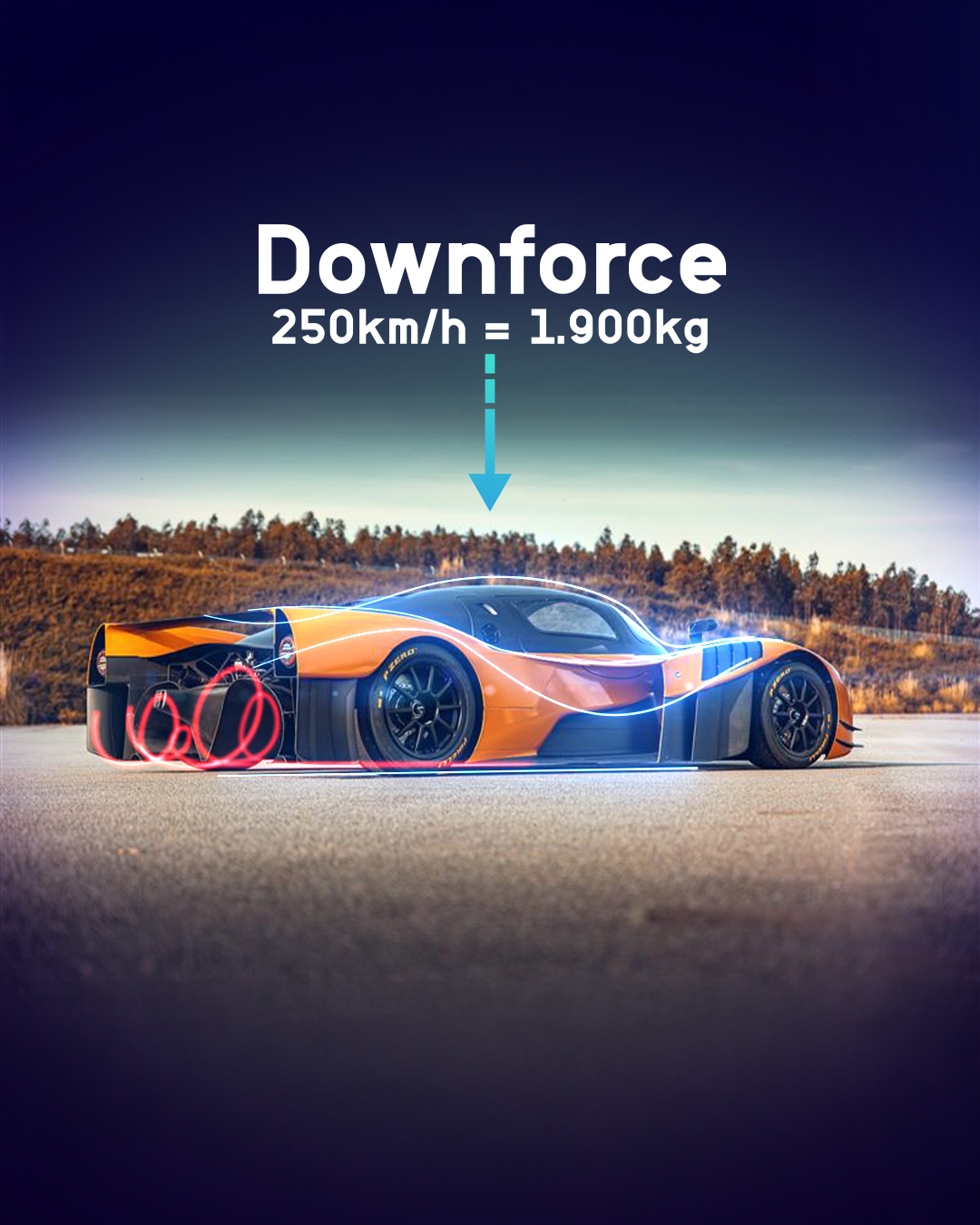
A significant part of the high level of performance offered by the Adamastor Furia is due to something that you can't see from the start: its high aerodynamic efficiency and the intelligent way in which it takes advantage of the airflow over and under its body to maximise its performance.
Designed from day one with maximum aerodynamic performance in mind, the Adamastor Furia, Portugal's first supercar, promises to set new standards in terms of dynamic performance in the exclusive high-performance vehicle segment, not only on the road but also on the track.
The development of the aerodynamic concept thus became the backbone of the Furia's specifications, a central element from which Adamastor's specialised team developed all the others. The all-carbon fibre bodywork does without the spoilers and ailerons usually used, which are designed to increase the downforce that is essential in terms of dynamics, but which almost always represent a less visually elegant solution.
Adamastor has thus developed a solution that not only helps to maintain the beauty and purity of the Furia's exterior lines, but also manages to generate a large part of the total downforce, an elaborate Venturi effect underbody. The Adamastor Furia thus produces an impressive aerodynamic load of 1.900 kg at a speed of 250 km/h. Adamastor is currently starting the track tests, but all the simulations carried out in a digital environment have been more than encouraging, with the Furia outperforming Formula 2 and Formula 3 single-seaters from the 2021 seasons in terms of downforce, as well as models from the GT3 and LMP2 categories.
Venturi effect: how does it work?
The so-called Venturi effect occurs when a fluid, in this case air, travelling through a duct such as those incorporated in the construction of the underbody of the Furia, suffers a decrease in pressure as it passes through a narrower area, a suction effect that translates into a significant increase in air speed and, consequently, a greater load of the car on the tarmac. This effect was demonstrated at the end of the 18th century by the Italian physicist Giovanni Battista Venturi.
Considering its application in the construction of a high-performance car such as the Adamastor Furia, this is also a solution that, together with the fact that it avoids installing components such as rear wings - which would increase weight and complexity - generates, in aerodynamic terms, considerably less drag, something that also influences the maximum speed achievable.
The innovative decoupled suspension configuration - developed in-house by Adamastor - whose geometry is able to control the roll and pitch movements of the Furia's bodywork in a totally independent and reactive way - also maximises the benefits of the Venturi effect underbody, making it possible to consistently control ground clearance, as well as enhancing tyre contact with the tarmac, which translates into higher levels of grip.
Adamastor is starting the Furia's extensive and demanding track testing phase, so the benefits and simulations of its aerodynamic concept, especially the Venturi effect generated by the underbody design, will soon be demonstrated on its favourite environments, not only on the planet's most exciting roads, but also, and above all, on the world's most challenging racetracks, where the Furia will set new benchmarks in terms of dynamics, writing Adamastor's name in the pages of automotive history.